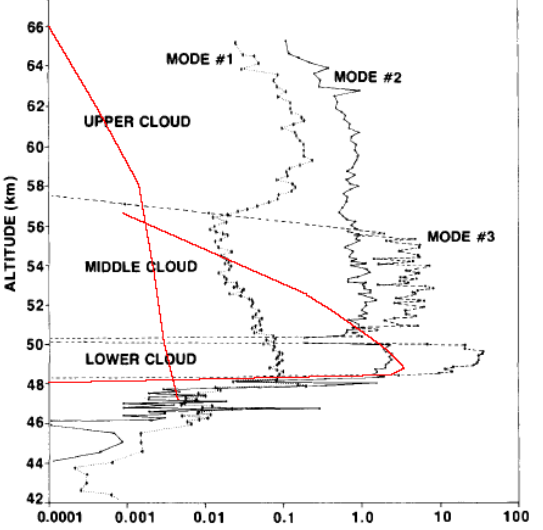Dark stripes on UV images of Venus are not connected with sulfur

The beautiful dark stripes on ultraviolet images of Venus's disc are in no way connected with the crystalline sulfur particles in its atmosphere – the ultraviolet is absorbed by another substance. This has been proven by data obtained from the first-ever model of the distribution of sulfur in Venus's gaseous envelope, which has been developed by the head of MIPT's Laboratory of High Resolution Infrared Spectroscopy of Planetary Atmospheres, Prof. Vladimir Krasnopolsky.
The results of the study have been published in the scientific journal Icarus.
Viewed through a normal optical telescope, Venus is a dull, yellowish-white sphere without any other distinguishing features. However, in the ultraviolet range, the picture changes drastically – dark and light areas appear on the disc, reflecting the dynamics of the atmosphere.
"These areas mean that somewhere in the upper cloud layer there is a substance that is absorbing UV radiation. Over the past 30 years there have been a wide range of hypotheses as to what this substance could be. Many scientists believed that sulfur particles were responsible for the absorption. But now we will have to abandon this hypothesis," says Krasnopolsky.
He first questioned the "sulfur hypothesis" in 1986 by demonstrating that the amount was not enough to explain the effect of UV absorption. In the new paper, Krasnopolsky presents the first photochemical model of the formation of sulfur particles in Venus's clouds. In particular, the model includes certain processes of the breakdown of sulfur compounds under the influence of light that had not been factored into previous models. The resulting profile compiles the concentration of sulfur aerosol at various altitudes.
The model showed that sulfur aerosol is predominantly found in the lower cloud layer. Its mass constitutes approximately one-tenth of the layer and it is not externally visible. However, observations in the near UV radiation range obtained from the Soviet interplanetary station Venera 14 indicate that absorption in this range occurs in the upper cloud layer at an altitude of approximately 60 km.

"This means that sulfur aerosol cannot be the cause of absorption of Venus's atmosphere in the near UV range," says Krasnopolsky.
In his opinion, the main absorber and source of the stripes on Venus's disc could be ferric chloride (FeCl3), which was discovered in the planet's atmosphere by the X-ray fluorescence spectrometer on board Venera 12.
The cloud layer of Venus is mainly composed of liquid droplets of sulfuric acid (H2SO4). In 1981, the Space Research Institute of the RAS conducted laboratory tests of the reflection coefficient in the near UV range for a 1 percent solution of ferric chloride in sulfuric acid, and their results are fully consistent with the observations of the present study.
"We can therefore consider this mixture of sulfuric acid and ferric chloride to be the most likely substance causing this very mysterious UV absorption," says Krasnopolsky.
More information: Vladimir A. Krasnopolsky. Sulfur aerosol in the clouds of Venus, Icarus (2016). DOI: 10.1016/j.icarus.2016.03.010
Journal information: Icarus
Provided by Moscow Institute of Physics and Technology




















